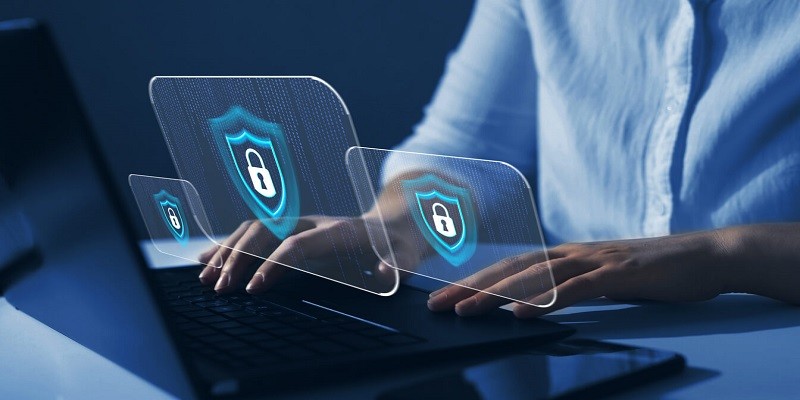Cybersecurity Trends to Watch: Protecting Against the Evolving Threat Landscape
Cybersecurity trends are rapidly evolving to protect against the ever-changing threat landscape. In today’s digital world, it is crucial to stay updated with the latest advancements to safeguard against potential breaches and attacks.
As technology advances, so do the methods employed by cybercriminals, making it imperative for organizations and individuals alike to be proactive in ensuring cybersecurity. We will explore some of the key trends that cybersecurity professionals should watch out for to effectively combat these evolving threats.
From artificial intelligence and machine learning to cloud security and zero-trust frameworks, being aware of these trends can help mitigate risks and enhance overall protection in the dynamic world of cybersecurity.
Emerging Threats
As the cybersecurity landscape continues to evolve, organizations must stay vigilant against emerging threats. From ransomware attacks to data breaches, it is crucial to implement robust defense measures to protect sensitive information. Keeping abreast of the latest cybersecurity trends is essential in safeguarding against potential vulnerabilities.
Supply Chain Vulnerabilities
Supply chain attacks target vulnerabilities in interconnected systems, posing significant risks.
Ransomware Attacks
Ransomware attacks encrypt data until a ransom is paid, causing massive disruptions.
Emerging Threats:
- Stay vigilant against supply chain vulnerabilities and ransomware attacks as they pose grave risks.
- Organizations must strengthen their cybersecurity measures to combat these evolving threats.
- Regular security audits and employee training are crucial in preventing cyber-attacks.
- Implementing multi-factor authentication can be a potent defense against unauthorized access.
- Backup systems regularly to avoid falling prey to ransomware demands.
- Stay informed about the latest cybersecurity trends to proactively protect your systems.
Technological Advances

With the ever-evolving threat landscape in the field of cybersecurity, keeping up with the latest technological advances is crucial to ensuring the safety of our digital world. In this section, we will explore two significant developments that are reshaping the cybersecurity landscape: AI and Machine Learning, as well as the impact of Quantum Computing. Let’s dive in!
AI and Machine Learning In Cybersecurity
The integration of Artificial Intelligence (AI) and Machine Learning (ML) technologies has revolutionized the cybersecurity field. These technologies enable organizations to proactively detect and respond to threats in real-time, significantly enhancing their ability to protect against cyber-attacks.
AI algorithms analyze vast amounts of data, allowing for the identification of patterns and anomalies that may go unnoticed by human operators. Machine Learning models learn from past incidents, constantly improving their accuracy and speed in recognizing and mitigating new threats. By leveraging AI and ML, organizations can fortify their defense mechanisms and stay one step ahead of cybercriminals.
Additionally, AI and ML contribute to the automation of routine cybersecurity tasks, reducing human error and increasing operational efficiency. These technologies can quickly identify and respond to potential threats, minimizing the impact of security breaches and saving valuable time and resources.
Quantum Computing Impact
The emergence of Quantum Computing poses both exciting opportunities and significant challenges in the realm of cybersecurity. While traditional cryptographic algorithms are designed to resist attacks from classical computers, they may become vulnerable to quantum-enabled systems.
Quantum computers leverage the principles of quantum mechanics to perform calculations at an unprecedented speed, potentially rendering traditional encryption methods obsolete. As these quantum machines continue to advance, the ability to break encryption algorithms previously considered secure could become a reality.
However, researchers are also exploring the potential of quantum technologies in enhancing cybersecurity. Quantum cryptography, for instance, offers a fundamentally secure method of transmitting sensitive information by leveraging the principles of quantum mechanics. By utilizing the properties of quantum particles, such as entanglement and superposition, quantum cryptography ensures that any attempt to intercept or tamper with data will be immediately detected.
| Advantages | Disadvantages |
|---|---|
|
|
As technological advances continue to reshape the cybersecurity landscape, organizations must remain vigilant and adaptable. By leveraging AI and ML capabilities while staying informed about the potential impact of quantum computing, we can bolster our defenses and protect against the ever-changing threat landscape.
Regulatory Landscape
In today’s digital age, the regulatory landscape surrounding cybersecurity is constantly evolving. As technology continues to advance, so do the threats that businesses and individuals face. It’s crucial to stay informed about the latest cybersecurity trends and regulations to effectively protect against the evolving threat landscape.
GDPR and Data Privacy Regulations
One significant regulation that organizations need to be aware of is the General Data Protection Regulation (GDPR), which was implemented by the European Union (EU) in May 2018. The GDPR aims to enhance the protection of EU citizens’ data and give individuals greater control over how their information is collected and used.
- The GDPR applies to all organizations that process the personal data of individuals residing in the EU, regardless of whether the organization is located within the EU or outside of it.
- Under the GDPR, organizations must obtain explicit consent from individuals before collecting and processing their data. They need to provide clear and concise privacy notices to inform individuals about the purpose and legal basis for collecting their data.
- Organizations must also ensure that they have adequate security measures in place to protect personal data from unauthorized access, disclosure, and loss. In the event of a data breach, organizations are required to notify the affected individuals and the appropriate data protection authorities.
Cybersecurity Compliance Standards
Aside from data privacy regulations like the GDPR, there are various cybersecurity compliance standards that organizations need to adhere to. These standards help establish best practices for safeguarding sensitive information and ensuring the overall security of an organization’s systems and networks.
- The Payment Card Industry Data Security Standard (PCI DSS) is a compliance standard for organizations that handle credit card information. It sets forth requirements to securely process, store, and transmit cardholder data.
- The ISO/IEC 27001 is an internationally recognized standard that provides a framework for implementing an information security management system (ISMS). It helps organizations establish, implement, maintain, and continually improve their information security practices.
- The NIST Cybersecurity Framework, developed by the National Institute of Standards and Technology (NIST), is a voluntary framework that organizations can use to assess and improve their ability to prevent, detect, and respond to cyber threats.
To ensure compliance with these cybersecurity standards, organizations may need to implement specific technical controls, establish policies and procedures, conduct regular risk assessments, and undergo third-party audits or certifications.
By staying up to date with the regulatory landscape and aligning their cybersecurity practices with these standards, organizations can better protect against the evolving threat landscape and mitigate the risk of cybersecurity breaches.
Cybersecurity Best Practices
Safeguarding against the ever-changing cybersecurity landscape requires staying ahead of emerging threats. Implementing robust security measures and ongoing training can help businesses defend against evolving cyber risks. Keeping abreast of current cybersecurity trends and investing in the latest protective technologies is crucial to ensuring solid online security.
Cybersecurity Best Practices Effective cybersecurity best practices. By following these guidelines, you can enhance your defenses and minimize the risk of breaches.
Employee Training And Awareness
training cyber-aware workforce. Educate staff on identifying phishing email passwords, and recognizing potential security risks. Regular awareness sessions can empower employees to be proactive in defending against cyber threats.
Zero Trust Security Model
Zero Trust Security Model to enhance your defense mechanisms. This approach requires validating location. By adopting a zero-trust mindset, you can minimize the chances of unauthorized access and data breaches.
Staycybersecurity best practices into your organization’s security strategy.
Frequently Asked Questions
What Are The Current Cybersecurity Threats?
Cybersecurity threats include ransomware, phishing attacks, and data breaches, constantly evolving to exploit vulnerabilities.
How Can Businesses Protect Against Cyber Threats?
Businesses can protect against cyber threats by implementing strong security protocols, regular employee training, and utilizing advanced threat detection solutions.
What Are The Emerging Trends In Cybersecurity?
Emerging trends in cybersecurity include zero-trust security models, AI-driven threat detection, and the increased focus on securing remote work environments.
Why Is It Important To Stay Updated On Cybersecurity Trends?
Staying updated on cybersecurity trends is crucial to proactively identify and mitigate potential threats, safeguarding sensitive data and ensuring business continuity.
How Can Individuals Enhance Their Cybersecurity Awareness?
Individuals can enhance their cybersecurity awareness by practicing good online hygiene, using strong, unique passwords, and being cautious of suspicious emails and websites.
Conclusion
As the scope of cyber threats widens, vigilance is key. Stay updated on emerging trends to bolster defenses. Implement robust cybersecurity strategies to safeguard against evolving risks. Remember, proactive measures are crucial in this constantly changing landscape. Stay informed, stay protected, and stay ahead of cybersecurity challenges.

